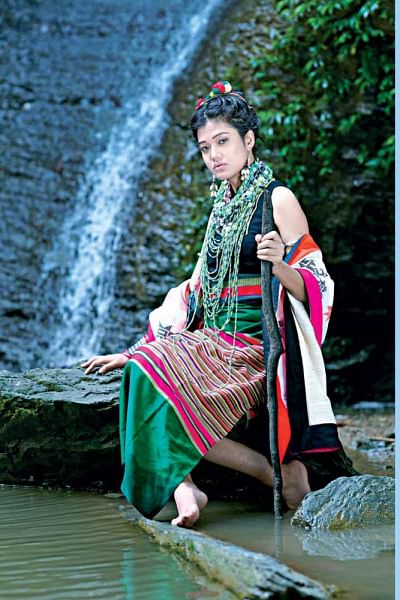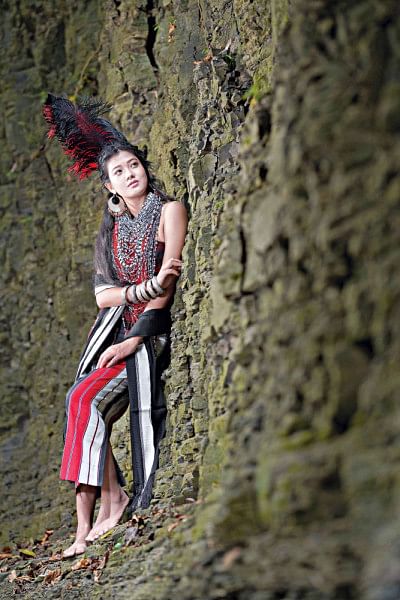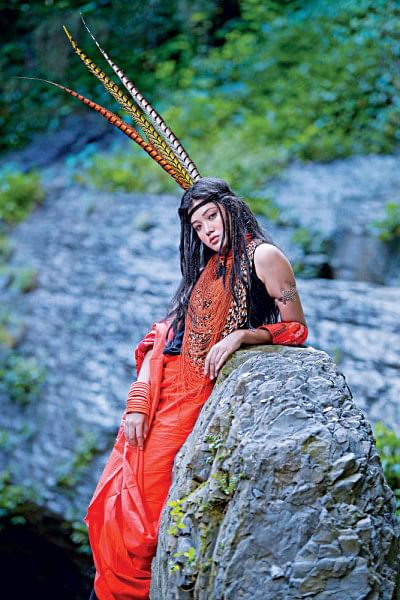Bizu festival in the hills

One of the most important socio-religious festival celebrated by the Chakma community in the Chattogram hill tracts, Bizu begins at the stroke of midnight on 11 April, by collecting flowers from the neighbourhood. Some flowers are collected from neighbours without taking their permission, as it is valued as an established festival ritual that signifies strong positive outcome of social connection.
12 April is called 'Ful-Bizu,' the first day of Bizu celebration that includes offering flowers to Lord Buddha and releasing floating flowers in lakes and rivers to bid goodbye to misfortune, to pay respects to the goddess of water and seek divine blessings. Every corner, doors, especially the main entrance of every house, is decorated with collected colourful flowers.
The second day, 13 April is called 'Mul-Bizu' or the main day of the festival, which starts with 'bath rituals,' a custom practiced by young children, where they help shower elderly parents or grand-parents as to pay attention to win their blessings before starting the auspicious day. Pantries are full with plenty of food, every kind of seasonal vegetable to prepare 'pazon ton,' a delicacy of mixed vegetables that completes the celebration. Since the first morning meal starts with pazon and as it is the main dish to offer to the unlimited number of guests, some prefer to prepare all the vegetables, or the cutting up part of the prep, on the previous or Ful-Bizu night.

The last day of the passing year, or Mul-Bizu night, ends with singing Chakma 'ubo-geet;' folk songs and with 'genghuli;' Chakma myth-story-telling songs with a specific vocal tone and playing traditional instrument called 'hegorong' and 'dhuduk.'
The third or last day of celebration is called 'gojjye pojjye' day, the word gojjye pojjye or 'roll around' day implies spending the very first day of a fresh new year aimlessly with much relaxation. The 'off day' or work-free day is considered as a beginning of a hassle-free, happy-go-lucky year. People go to 'hiyong' or Buddhist shrines early in the morning to pray and light candles for yearlong peace and prosperity.
Doors are open for every community, people from different races and religions are welcomed to join the celebration. Hence, the practice of this cultural heritage portrays robustness and an opportunity to share, cherish social bonds together to live a joyous, prosperous year in harmony.

Photo: Hill Valley Production
Model: Bristi Dewan, Wardrobe and Jewellery: Sozpodor by Tenzing
Makeup: Deedhiti Chakma
Styling: Tenzing Chakma

 For all latest news, follow The Daily Star's Google News channel.
For all latest news, follow The Daily Star's Google News channel. 



Comments